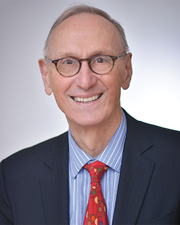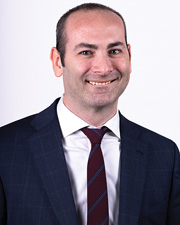


As America prioritizes reducing its carbon footprint, attention has focused on solar and wind energy, especially amid the evolution of a bipartisan federal infrastructure plan. But another renewable energy source—geothermal ground source systems—can grow to be a crucial part of the solution, and New York is setting the pace for the nation for geothermal screening tools.
New York’s Westchester County has just replicated the online geothermal screening tool created in 2018 by the City of New York. That is a major development because it demonstrates that the original screening tool, the first of its kind in the nation, can be adapted for a suburban county, creating a new model that is more broadly applicable across the country.
As principals at the consulting engineering firm that created the New York City model and has been integrally involved in the Westchester version, we understand well the implications of these two tools. They have a vital role to play in illuminating the potential of geothermal ground source systems in reducing America’s carbon emissions.
A geothermal ground source system conveys thermal energy stored in the subsurface ground. That energy can be accessed from larger lot areas, of which most cities and counties have many, to provide efficient heating and cooling for nearby buildings. In individual settings, a geothermal ground source system works this way: A series of pipes called a heat exchanger is buried in shallow or deeper ground near a building; the pipes circulate fluid to the building’s heat pump system, which provides heated or cooled air for the building. In winter, the heat pump extracts heat from the subsurface. In summer, the reverse occurs: the pump moves heat from the building into the ground.
To make it easy for property owners to assess—in a free and user-friendly way—the feasibility of ground source heating and cooling, New York City commissioned the original Geothermal Ground Source Screening Tool, which covers every lot in all five boroughs—almost 900,000 lots. This summer, Westchester County launched its own version—Westchester GeoPossibilities—for every lot in Westchester. The Westchester model was funded by the New York State Energy Research and Development Authority (NYSERDA) and is being promoted by Westchester County, Sustainable Westchester, and the Westchester County Association. Together these tools offer vital lessons for government officials and property owners looking to reduce carbon emissions.
First, geothermal systems are most applicable to larger lots that are less densely populated. A high-rise office tower on a relatively narrow lot is not as suitable as a suburban office park. There are, however, many types of properties that are potentially good fits, including colleges and universities, medical centers, and office and residential properties. In cases where the ground area is not sufficient, hybrid options are available that use the geothermal system for most of the year and augment it during periods of more extreme temperatures.
Second, while geothermal ground source energy is free, there is a cost to extract and circulate it, and there are upfront expenses associated with installing the geothermal system. The cost can best be justified when a new heating or cooling system is needed, but much of the cost can be recovered over time in savings and reductions in carbon emissions. In addition, incentives are available from the federal government, New York State, and local energy providers.
Sustainable Westchester offers information on incentives and rebates as well as additional advice for homeowners considering a geothermal system. The Westchester County Association has created a Clean Energy Program Portal that provides a searchable guide to available clean energy programs, including a geothermal system, and incentives for businesses in Westchester and the surrounding region.
Third, because a geothermal system is typically delivered to nearby buildings, it does not require massive infrastructure to transport it from a distance and to store it. Geothermal heat pump systems do need electricity to move the fluid around, but that requires a relatively small amount of electricity, reducing the burden on the electrical grid. In the case of a college campus, that electricity could be generated by nearby solar or wind power. In any event, the reduced pressure on the electrical grid is another major benefit.
Fourth, the New York City and Westchester models can be replicated further. Relevant topographical data is usually available through U.S. geological survey maps and requires review by local experts, but that process is greatly facilitated by the existence of these two models. Individual counties may need support from the state—as Westchester received from NYSERDA—but that cost is more than justified by the prospect of extraordinary environmental benefits across an entire jurisdiction.
Geothermal systems provide a major environmental opportunity for the nation. New York City and Westchester County are pointing the way.
Charles Copeland is president and CEO and Tristan Schwartzman is a principal and director of energy services at Goldman Copeland Consulting Engineers, New York, N.Y.
